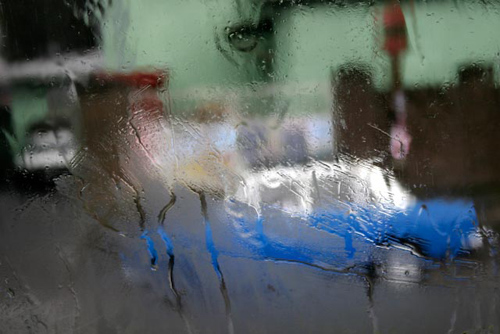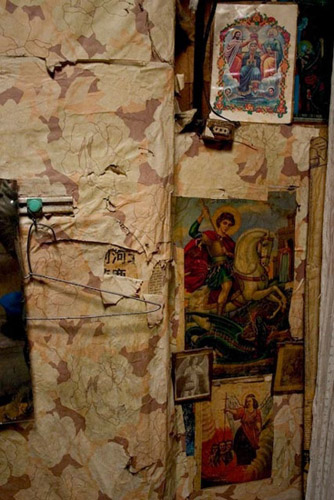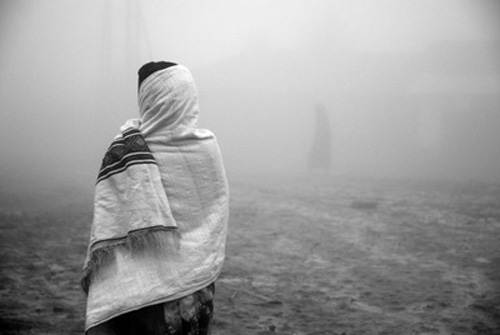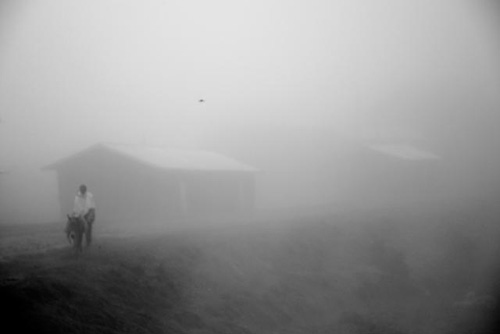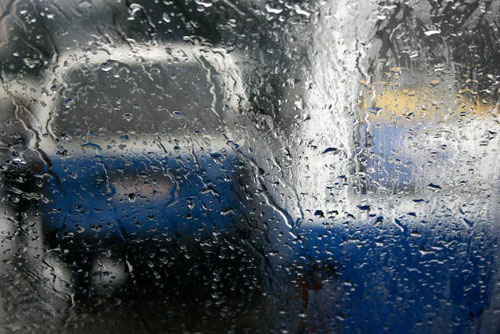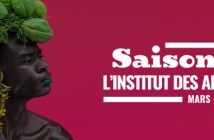Born in Addis Ababa in 1975, Michael Tsegaye is one of the most promising Ethiopian photographers of his generation. After started out in painting, which has given him his strong sense of composition, his photographs – notably portraits taken in the course of his travels and meetings throughout his country – trace the transformations and changes of Ethiopian society.
How did you come to photography? I’ve read that you were first a painter.
Before that, I studied economics for three years, and then I studied painting for four years at the Addis Ababa University School of Fine Arts and Design.
For one year, I painted in my studio. Then I switched to photography because I encountered some difficulties with oil painting.
Was hard for you to stop painting?
The two processes are completely different, but still, you can say what you want, whatever form it takes, so it was ok!
So, I attended a workshop at the Goethe Institute – I used to go there to read books – led by a German photographer, Ralf Beacker.
It was just a one-week workshop… but, he bought me my first camera, a 35 mm Minolta.
That’s how I managed to produce my first exhibition.
After the workshop, I worked on a story on taxis in Addis Abeba for six months: how people decorate the inside of their cars. I approached it like a painting structure: it was coulourful, there wasn’t that much information, it wasn’t a photojournalistic report, it was more abstract photos. That was my first work!
Do you still work with your Minolta?
Now I use a digital camera, because it’s easier and faster to work with. And also it’s not expensive… Developing, scanning, and printing is much more of a process…
What kind of photography are you working on now?
After the taxi photo project, I started a series on Addis Ababa by night: the bars, outdoors, how a city lives at night… But now, I more interested in people: portraits and the interiors around them. For example, I did a series on old Italian architecture: how it was transformed by people through the time, how they make it their own home.
I am now interested in the way people live. That’s what I’m doing now.
At the 2007 Bamako Encounters, for example, I showed some work made in Ankober, in Ethiopia, entitled « Ankober, mystic »: it was a way to explore how people live in rural places but in a very personal way…
Where can you see photographic exhibitions in Addis Ababa? Where are the places you can show your work?
In cultural institutes and galleries, but people still think that photography is just for weddings… There are many photo studios for that. For this reason there are so many untold stories to be portrayed there; we need more photographers doing this kind of work.
Also, as photographers, we are not organized together as a group to work together. There’s no such system, no places to expose and learn photography from other photographers, to get inspired by their work. So, mostly, I work on my own.
So, beside your personal work, how do you earn your living?
I work for NGOs, different organizations: they need photographs for their brochures, annual reports. I do such work.
Let’s talk now about the exhibition about the Obelisk in Axum (1), promoted by Unesco
It was an assignment to document the process of re-construction of the Axum Obelisk. I think it was something very symbolic for Africa, not only for Ethiopia; it was great to document it.
How did you work on this?
Unfortunately, I didn’t have the chance to take pictures when it arrived in Addis Ababa from Rome, or even when it was still in Rome. I wished I could have done the whole story!
So, I started taking photographs from the beginning of the reconstruction (the Obelisk had been broken in three parts to be moved) till its final standing.
This took more then four months. I went to Axum five times, staying there four to eight days.
It was an assignment, but, to me, it was more than that because of its symbolic charge.
Was this major event given much coverage?
Apart from Theo Eshetu, who was there too, taking pictures and making a video, I think I was the only Ethiopian photographer.
Then there were some Unesco photographers and also photographers from Axum taking tourist photographs.
Coming onto international photo events on African photography. The 2009 Bamako Festival has just ended; what were your impressions of this festival in 2007?
To me, Bamako was interesting because I saw lots of works, I met photographers, curators, publishers…
It was good to meet other African photographers and share our experiences.
You have already been part of big shows like Snap judgments, curated by Okwi Enwezor…
Yes, this gives me more energy to continue, to do more work: and that is important!
What are your future projects?
I don’t know where my future work is going yet, but it is for sure going to be more personal and about Ethiopia. Right now, I am assisting Aida Muluneh with her NGO, Desta For Africa (2), teaching some students photography and am also involved in the Addis Ababa International Photography Festival. I am also exhibiting in the group show, « African Journey », in Utrecht, the Netherlands (3), where I am showing my « Ankober, mystic » series.
(1) Aksum Rediscovered – The Re-installation of the Obelisk. From 4 to 15 May 2009 at the Unesco House, Paris.
(2) http://www.destaforafrica.org/about.html
See interview with Aida Muluneh, « It’s time now for Africans to present their own realities! », where the photographer talks about her work:
//africultures.com/php/index.php?nav=article&no=8095&texte_recherche=aida%20muluneh
(3) « African Journey »
From 18th March to 24th April 2010
Opening: Saturday 20th March 2010, 4-6pm.At SANAA GalleryJansdam 2, 3512 Hb UtrechtThe NetherlandsInfo: www.galeriesanaa.nl. ///Article N° : 9391

